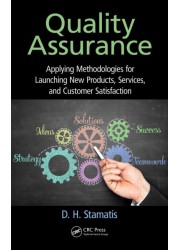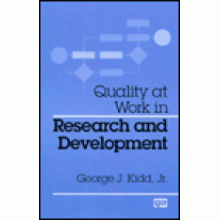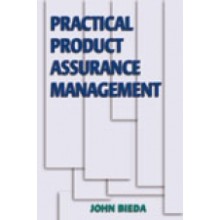Quality Assurance: Applying Methodologies for Launching New Products, Services, and Customer Satisfaction
Quantity:
-
Add to Compare
Features
- Covers the importance of timing and setting milestones
- Discusses the importance of having a quality system in place
- Explains the need for audit, FMEA, SPC, and GD&T
- Details the reasons behind having a method for selecting and prioritizing suppliers
- Provides an understanding of the importance of supplier development and the roles that a customer must play in the course of continual improvement
- Presents the importance of incorporating a philosophy of problem solving in the pursue of continual improvement, including lean manufacturing, SPC, GD&T, Poka-Yoke, and MSA
Summary
Although regularly introducing new products or services is the lifeblood of most industries, bringing them to market can be fraught with peril. Timing, cost, and quality all play important roles in a successful product launch and avoiding expensive — often in more than just dollars — recalls and redesigns. Quality Assurance: Applying Methodologies for Launching New Products, Services, and Customer Satisfaction details continual improvement (CI), a proven process for avoiding common problems and creating customer satisfaction.
The book explores the three fundamental approaches required to create a truly CI culture in any organization: a) consistent philosophy of improvement by management, b) receptive organizational culture, and c) the entire culture of the organization must be willing to make decisions based on measurement and data. It outlines the seven principles: research/plan, assure, explain, prioritize, demonstrate, confirm, and show. However, as with CI itself, this attitude must be incorporated into the processes of any organization and create products or services for the market place that will delight customers rather than just satisfying them.
Time and cost constraints are the biggest culprits here, not any one person’s lack of due diligence. When this happens, organizations must look at the bigger picture internally and identify it as a system problem. Based on the author’s 35 years of experience, this book covers the essential items for doing the right thing the first time especially during launching a good product and/or service to the customer. It identifies key indicators and methodologies that will help you attain excellent performance, delivery, and cost with both the customer and supplier. In other words, by following these methodologies and indicators, the job will get done right the first time.
Table of Contents
Part one: Original Equipment Manufacturing (OEM) Responsibilities: Timing (product development). Basic OEM quality system. . Manufacturing (facility) site assessment (MSA). Sourcing. Segmentation. Supplier Development. Role of supplier technical engineer. Part two: Supplier Responsibilities: Commitment to continual improvement. Lean Manufacturing. Quality operating system (QOS). Certification to the international standard and customer specific requirement. Statistical process control (SPC). Problem solving methodology. Internal audits. Poka-Yoke. Measurement System Analysis (MSA). Supplier’s perspective of APQP. Supplier’s perspective on the PPAP. Capacity Analysis. Geometric dimensioning and tolerance (GD&T). A typical detailed expectation list of a site assessment by the customer to the supplier’s facility. PPAP Checklist. Mistake proofing. Preparation for an audit. Miscellaneous forms. Glossary. Selected Bibliography.
Write a review
Your Name:Your Review: Note: HTML is not translated!
Rating: Bad Good
Enter the code in the box below:
Copyright © 2014 Engineering Standards Bureau. All Rights Reserved.
Developed By Zoom Into Web











